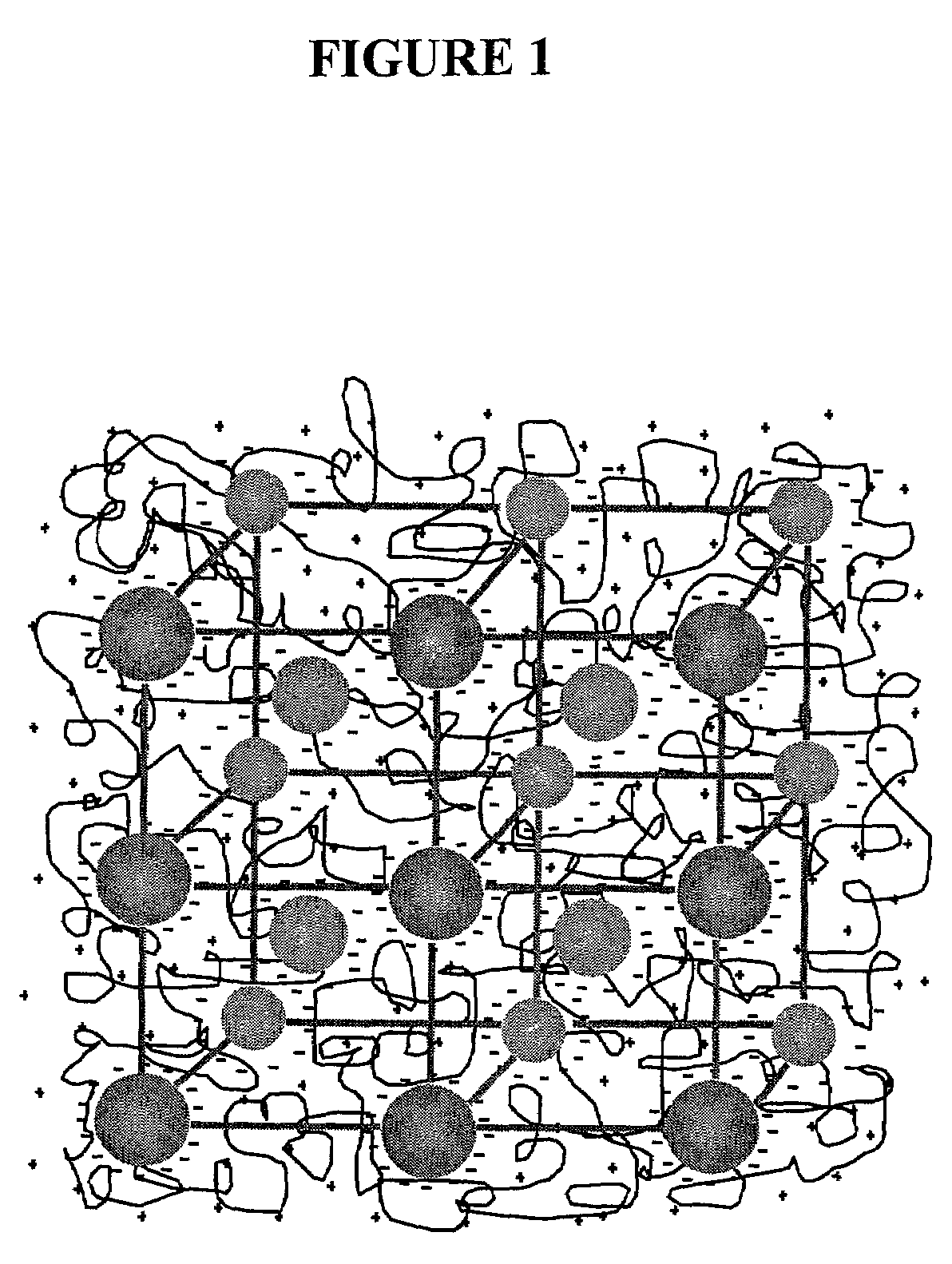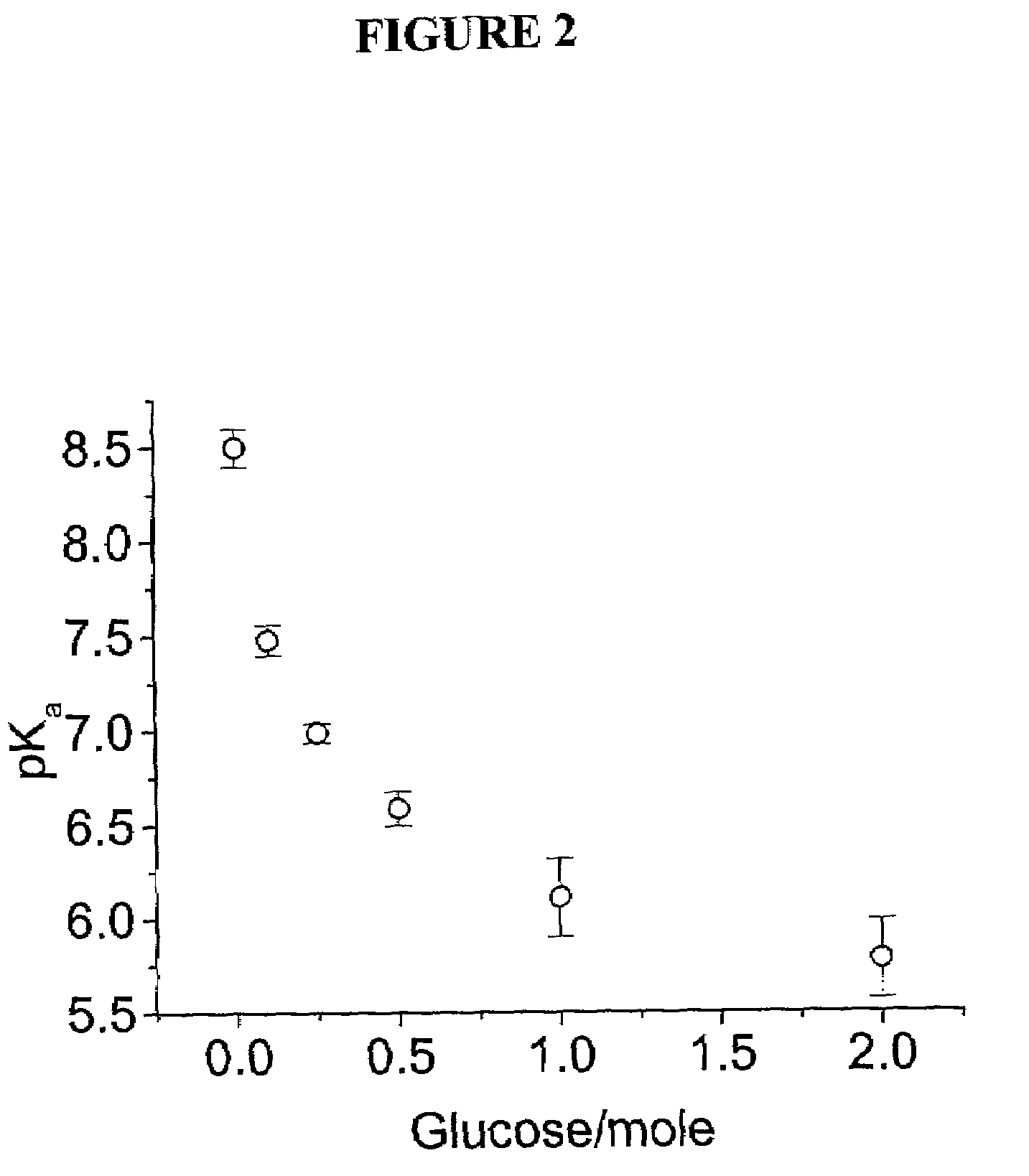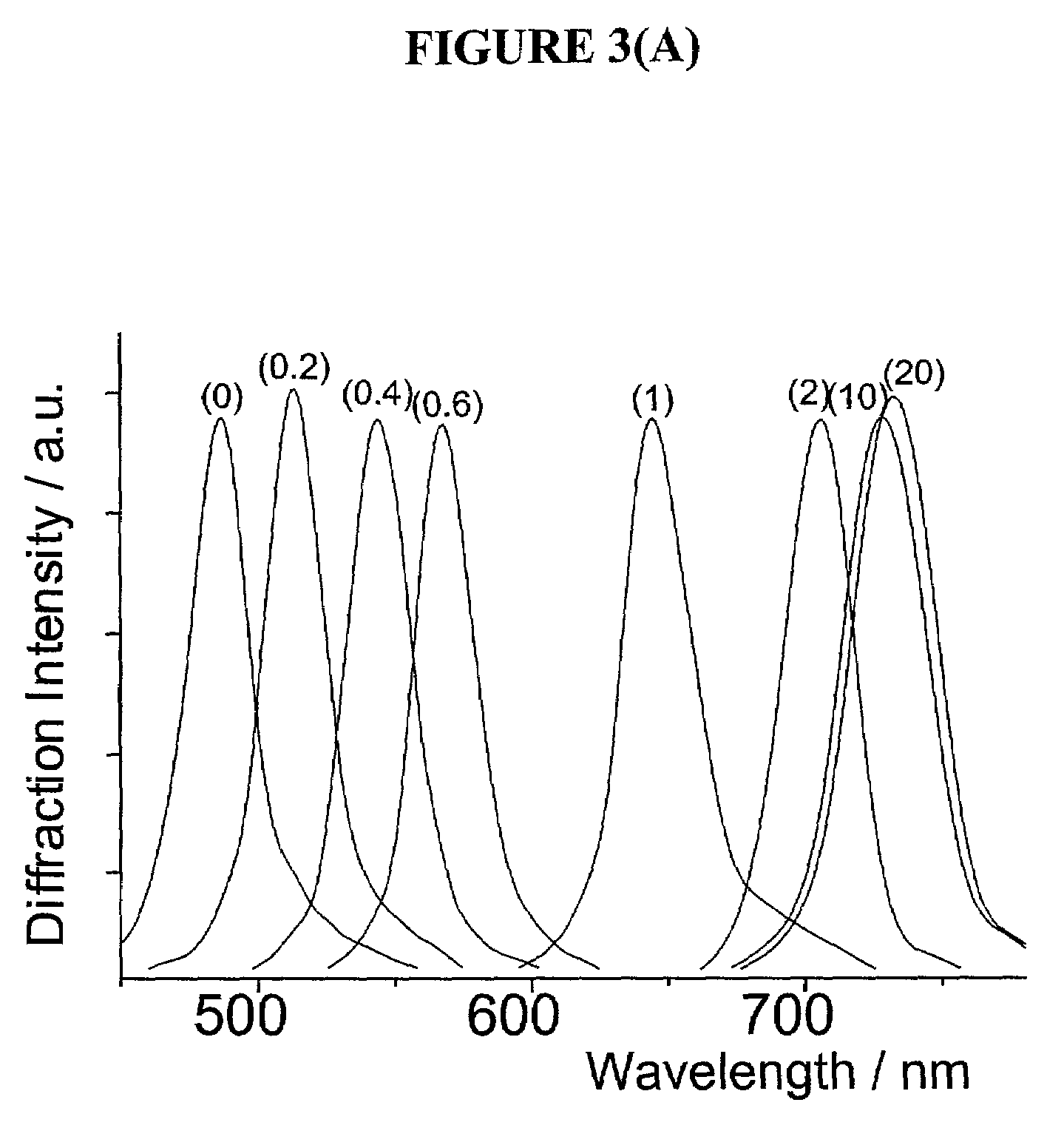Intelligent polymerized crystalline colloidal array carbohydrate sensors
a technology of polymerized crystalline colloidal arrays and carbohydrate sensors, which is applied in the direction of instruments, prosthesis, and moisture content investigation, etc., can solve the problems of poor patient compliance, negative health consequences for patients, and affect the accuracy of this techniqu
- Summary
- Abstract
- Description
- Claims
- Application Information
AI Technical Summary
Benefits of technology
Problems solved by technology
Method used
Image
Examples
example 1
Preparation of Crystalline Colloidal Arrays (CCAs)
[0055]Highly charged, monodisperse polystyrene colloids were prepared by emulsion polymerization as described in Reese et al., J. Colloid Interface Sci., 232:76–80 (2000), which is hereby incorporated by reference in its entirety. Specifically, suspensions comprising about 5–10 weight % of ˜140 nm polystyrene colloidal particles were used. The suspensions were cleaned by dialysis using deionized water (specifically using the Barnstead Nanopure Water Purification System at 17.5 MΩ-cm) and by shaking with ion-exchange resin. The suspension became iridescent due to Bragg diffraction from the CCA upon shaking with ion-exchange resin. Specifically, each particle possesses ˜60,000–70,000 strong acid groups.
example 2
Preparation of Acrylamide Polymerized Crystalline Colloidal Arrays (PCCAs)
[0056]In this Example, acrylamide polymerized crystalline colloidal arrays (PCCAs) were synthesized by a free radical solution polymerization process which utilized diethoxyacetophenone (DEAP) as a photoinitiator. Specifically, about 100 mg (1.4 mmol) of acrylamide, 5 mg (33.7 μmol) of bis-acrylamide, and 2 g of the CCA suspension (in an amount of about 8–10 weight %) were combined in deionized water along with 50 mg of ion-exchange resin. This polymerization mixture was shaken for about 10–15 minutes and was deoxygenated by nitrogen bubbling. About 7.7 μL of a 10% solution of DEAP in DMSO (3.84 μmol of DEAP) was added to the acrylamide-bisacrylamide-CCA (bisCCA) suspension, and the solution was shaken for an additional 10 minutes. Subsequently, the solution was centrifuged for 30 seconds in order to precipitate the resin particles. The resulting dispersion was injected into a cell consisting of two clean quar...
example 3
Chemical Modification of PCCA to Incorporate Phenylboronic Acid Molecular Recognition Component to Form Glucose Sensor
[0058]The Examples above focused on the formation of the polymerized crystalline colloidal arrays (PCCAs) embedded in acrylamide hydrogel. Once a PCCA has been formed, it is necessary to chemically modify the hydrogel backbone of the PCCA in order to functionalize the PCCA with a molecular recognition component that is capable of binding glucose. Specifically, when a boronic acid such as 3-aminophenylboronic acid is used, two routes are available for this chemical modification of the PCCAs, and these routes are shown in Scheme 1 below:
[0059]
[0060]In embodiments where the “hydrazine route” shown above was utilized for chemically modifying the PCCA material, acylazide groups were attached to the PCCA hydrogel backbone in order to link them to the 3-aminophenylboronic acid. The hydrazine treatment was performed as described by Inman et al., Biochemistry, 1969, 8, 4074; ...
PUM
| Property | Measurement | Unit |
|---|---|---|
| pKa | aaaaa | aaaaa |
| ionic strength | aaaaa | aaaaa |
| ionic strength | aaaaa | aaaaa |
Abstract
Description
Claims
Application Information
 Login to View More
Login to View More - R&D
- Intellectual Property
- Life Sciences
- Materials
- Tech Scout
- Unparalleled Data Quality
- Higher Quality Content
- 60% Fewer Hallucinations
Browse by: Latest US Patents, China's latest patents, Technical Efficacy Thesaurus, Application Domain, Technology Topic, Popular Technical Reports.
© 2025 PatSnap. All rights reserved.Legal|Privacy policy|Modern Slavery Act Transparency Statement|Sitemap|About US| Contact US: help@patsnap.com



